While I was in Sweden, we visited Stockholm twice. A big city, with lovely buildings, clean streets and lots of bridges.



Our first stop was the City Hall:

We got through the entrance and wandered a bit around to admire the view, but didn't get a tour of the inside. The building is still being used and guided tours are available only specific hours during the day.


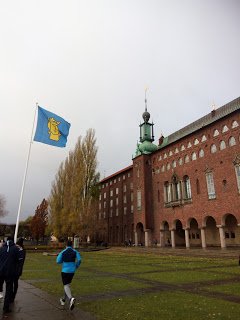

Next, we were off to explore some of the alleys of the old city. I was amazed by the architecture. The streets were crowded, some rain started to fall and we ended up in an underground coffee house seeking for a temporary shelter (it was too dimly lit, that I didn't get any photos from there as I didn't want to disturb anyone with my camera flashlight).



When the shower stopped, we started walking again. We had a look at the souvenir shops:
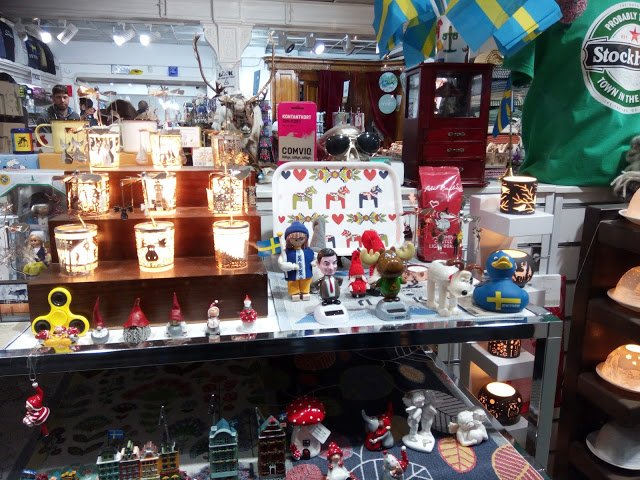
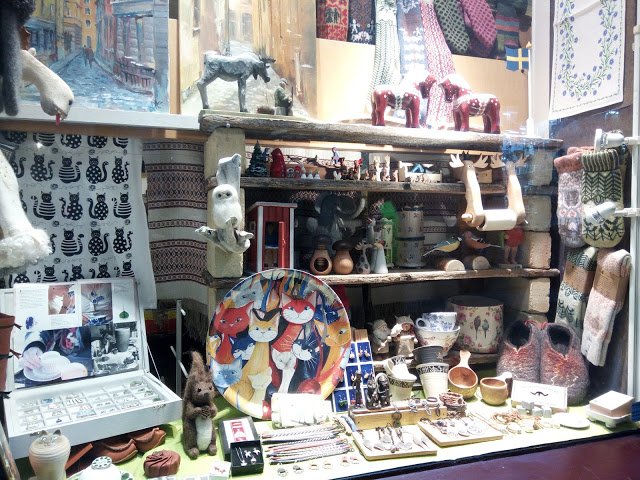
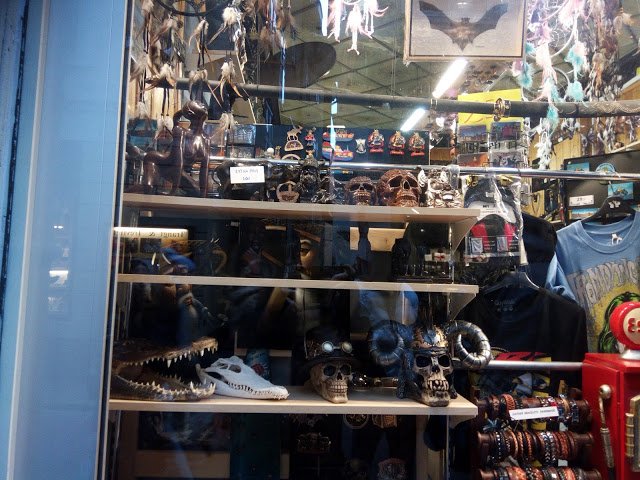
We found some MOOMINS! A favorite animation from my childhood years (the second photo is from a Moomin-themed coffee house):


Next, we took the road towards the area where you can find lots of museums (they even have a museum dedicated to ABBA!). There was also a funfair there (closed for the winter months to my friend's disappointment). Look at all those wonderful buildings we saw along the way.




We visited the Aquaria, an aquarium as you can get from the name, a place that houses different species of fish, frogs and other sea creatures.
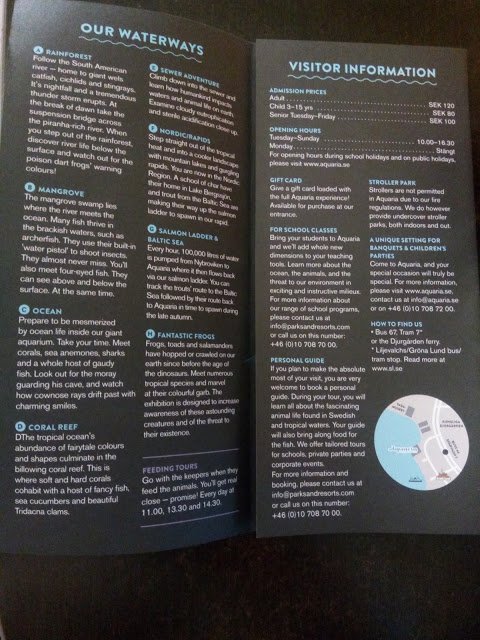
We saw some fish of the tropical forest and a few frogs. Even though I kissed that big one it didn't turn out to be a prince :(

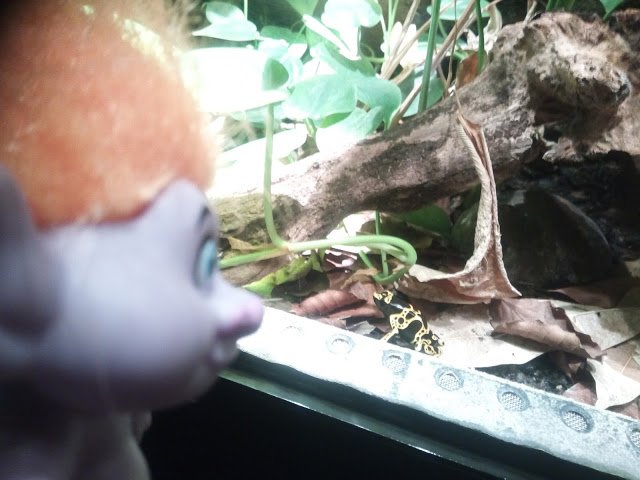
This frog in the right picture is a poison dart frog. Poison dart frogs belong to the Dendrobatidae family, can be found in South America (from Costa Rica to Brazil) and they display a variety of bright colors that are meant to warn possible predators to keep off (this tactic is known as aposematic coloration). They are not bluffing though, dendrobatids are among the most toxic creatures of the animal kingdom, some of them can kill you just by touch and hunters have used them to poison their arrows. Their poison probably comes from their diet (they filter the poison from ther food and use it to protect themselves). Don't worry though, not all dart frog species are toxic.
Weird parents: If you ever thought of your parents as being overprotective, learn that some dart frog species carry around their tadpoles on their backs. Also, certain females lay eggs just to feed their tadpoles (those creatures eat their unborn siblings, yuks!). [source]
Then, we visited the tank with the ocean cratures. I must tell you, it was a Saturday and the aquarium was full of families with their children, they all loved watching the show those poor captivated creatures gave for us.
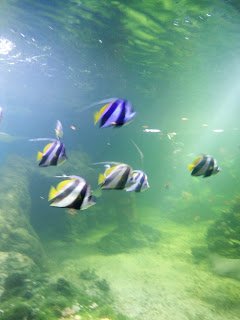
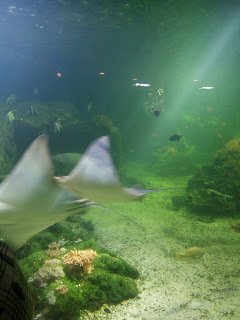
Did you see that shark?

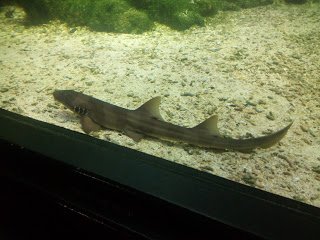
And what's this weird thing coming out of your head, dude?!

Sting ray attack! Hey! Is that a muraena coming out of the rock?!
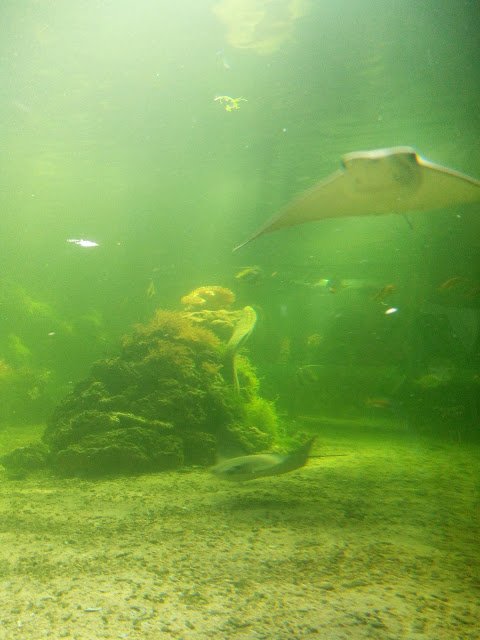
Murenae or mooray eels are long fish that move like snakes (they have no fins). They can be found anywhere on the planet (preferably in warm and temperate waters) and are not exclusively marine animals, some live in brackish and fresh water. They are carnivorous lurkers that feed on fish, molluscs and crustaceans. They spend most of their time hiding in crevices and holes between rocks, keeping safe from other predators. They reproduce through eggs which are fertilized outside of the female's body (eggs and sperm are released in the water) during the times that seawater is at its warmest (at the end of summer). [source]
We saw weird shrimps and a lionfish:

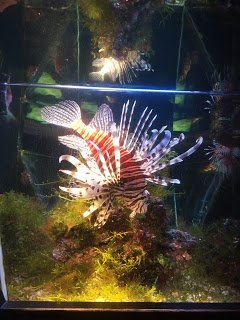
Lionfish is an invasive species that can damage reef ecosystems by killing off other species populations. They are native in Indo-Pacific seas and they have been posing a threat on fish population of Florida waters. Armed with venomous spikes, lionfish can protect themselves from ambitious predators (that they don't seem to have). They are carnivorous (well fish eaters to be more precise) and use their impressive fin-equipment to "corner" their preys. They even turn against their own kind as some cases of cannibalism among lionfish have been reported. [source]
We also saw some starfish and yes, a box fish like the one @trumpman talked about three months ago:
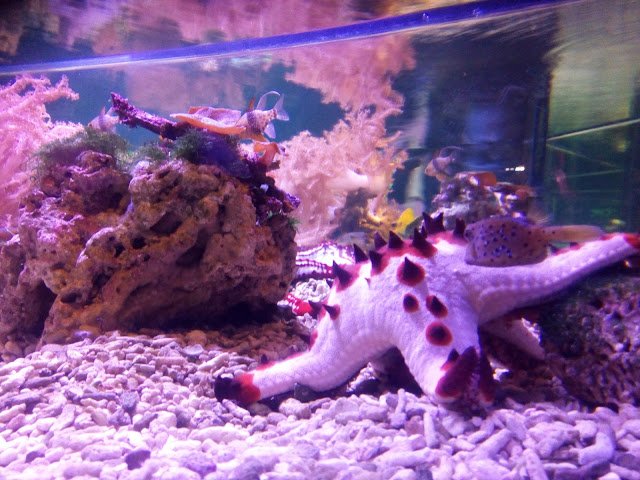
This beautiful spiky starfish is called a Chocolate Chip Sea Star or Protoreaster Nodosus (don't be fooled by its name, it doesn't taste that sweet). Those protruding chips, sorry, tips are its defense mechanism against predators. Starfish, like urchins, are echinoderms. Learn that, they have a thick body and despite being invertebrates, they have a skeleton but instead of bones, it is made of calcium-based plates that allow sea stars more flexibility on their arms. Sea stars don't seem to have any deadly enemy, humans are their main threat since they've been hunting them to make turn them into decorations and souvenirs or keep them in fish tanks and aquariums.
Strange eating habits: They eat corals, sponges, sometimes snails and molluscs or remains from dead plants and other marine creatures. When it's dinner time, they push their stomach out, surround their food and after it is killed by their stomach juices, tiny hair start moving it inside the sea star's body. [source]
Check out this link for some cool photos of other amazing sea star species!
There's a sea cucumber:
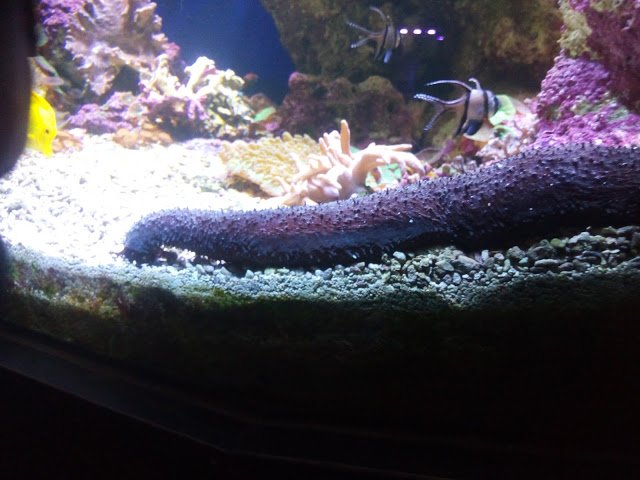
To avoid misunderstandings sea cucumbers are not vegetables, they are ocean floor echinoderms. They live on the floor or burried beneath it. They have about 8-30 tube feet around their mouths (like small tentacles) that use to eat algae, waste materials or other tiny creatures. They work pretty much like earthworms, by breaking their food down and making it food for other bacteria which recycle it back into the ocean. Those funny creatures are considered a delicacy for certain fish and animals of the ocean, but they can also end up on a plate in a restaurant in Asia! They reproduce by releasing eggs and sperm in the water.
They fight back: When threatened, some sea cucumbers emit sticky threads to restrain their enemies. They can also mutilate themselves and get away (don't worry, some body parts are expendable as they can grow back again - just like Prometheus' liver). [source]
And some lovely seahorses, aren't they cute?
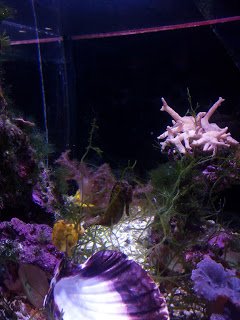
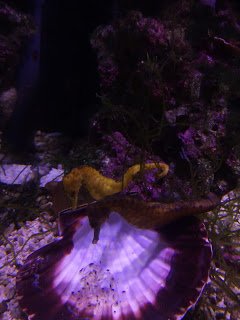
Seahorses are fish without scales. They have an exoskeleton covering their soft bodies. They eat small crustaceans and use their snouts to suck their food in. Their food must be broken down while eating since they cannot chew. Did you know that seahorses have a huge appetite and eat about 30-50 times a day?! That's like having a snack almost every half an hour! What is also amazing about them is their eyes, they can move independently meaning that they can be looking back and forward at the same time (pretty useful mechanism when you're watching out for predators). They can be chameleons as well by changing colors to match their environment or during courtship. Seahorses mate for life and never miss out on their daily courtship ritual every morning, where the male circles around the female and they both start going in circles often around another object.
Male pregnancy: Remember the movie Junior with Schwartzenegger? Well, seahorses must have been the inspiration for that one. They are the only species to have a reverse-pregnancy! The female leaves her eggs in the male's pouch, he fertilizes them and then bears them for 2-4 weeks until birth. Giving birth can be an exhausting procedure that lasts up to 12 hours! [source]
Finally, we moved on to the jellyfish:
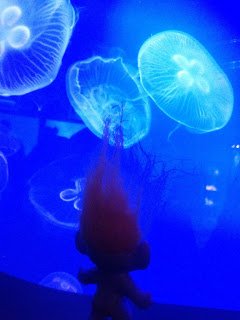
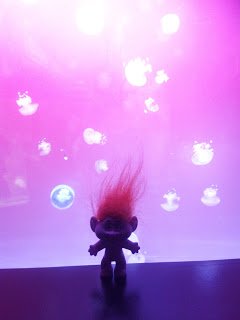
In the first photo you can see the aurelia aurita jellyfish. In the other photo you can see phyllorhiza punctata or the australian spotted jellyfish.

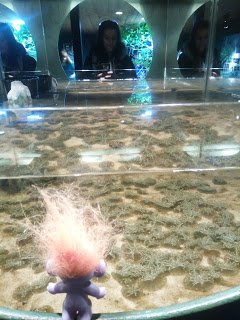
This is the Cassiopea or upside-down jellyfish! This species spend their time on the bottom of the sea, not in great depths (they need the sunlight) and are in a symbiotic relationship with an algae species, Symbiodinium microadriaticum. These zooxanthellae live on the bottom part of the adult jellyfish and need the light for photosynthesis (they produce valuable nutrients and carbon for their hosts). The jellyfish catch their food by filtering sea water for nutrients or with the help of their toxic nematocysts on their tentacles. The unfortunate prey is torn to pieces and then pushed deeper in the secondary mouths of the jellyfish (yes, you read it right, they don't have one mouth, but several, smaller secondary mouths). The nematocysts and their toxin (cnidocil) serve also as a defense mechanism for enemies. They reproduce through eggs that are fertilized by the sperm the males release in the water. [source]
In the background of the right photo you can spot another, very rare species of jellyfish. It is called @ruth-girl, it lives in Greece, feeds mostly on chicken and chocolate, loves coffee and consumes great amounts of milk daily! Defense mechanism against predators: She uses humour and sarcasm to fight annoying people off and exercising is her psychotherapy (way much cheaper than a therapist).
Sadly our visit had to end because we needed to catch the train back to Uppsala, but we couldn't leave without a cup of hot coffee first... and some pastry of course! Cupcake anyone?

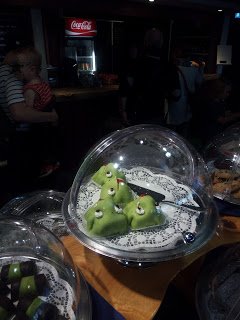
More doses of Stockholm coming in the next part!
*All images by @ruth-girl

Thank you for being here and reading this post. If you please, feel free to check out my bizarre natural phenomena series, short stories, educational posts or pranks using science.
Special thanks and mentions go to:

Until my next post,
Steem on and keep smiling, people!

